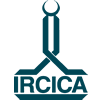This issue begins with an outline of the proceedings of the 27th Session of the Governing Board of IRCICA held last June. The session reviewed the past and ongoing work and made recommendations on those planned for the future. The enlightened observations of the Board members, who are scholars and specialists in fields connected to those of IRCICA, provide valuable guidance to our activities.
It is a pleasure to share with you here in this issue the outcomes of the different activities we have realized since last spring. Among them, the congress organized in Beijing jointly by the Chinese Academy of Social Sciences (CASS) and IRCICA underscored multifarious aspects of the cultural relations that have been maintained between China and the Muslim world from the first century of Islam onwards which built upon and diversified the trade relations that had started much earlier. As was foreseen at the very stage of drafting of its concept and theme, the congress mirrored the significance of the organizational initiative mobilized through the cooperation between the 57-member Organization of Islamic Cooperation on one hand and the Ministry of Foreign Affairs of the People’s Republic of China on the other. Our article on this event is as detailed as possible within the volume limitations of this bulletin. Certainly the important role of the congress in throwing light on shared aspects of cultural history between Muslim countries and China and in opening new avenues of cultural exchanges between them for the present and the future cannot be over-emphasized.
Shortly before the Beijing congress we were in Kazan, capital city of Tatarstan, where our fifth congress on “Islamic Civilization in Volga-Ural Region” also evoked a history of inter-cultural interactions, that time in another regional context, that of inter-faith coexistence in Volga-Ural region. We coordinated this congress jointly with the Center of Islamic Studies and Sh. Marjani Institute of History, Tatarstan Academy of Sciences and the Russian Islamic University in Kazan. In addition to successfully building the fifth forum in the series of history congresses about the region, it constituted the academic side of a series of events, which in that period in Kazan, marked the commemoration of the 1123rd anniversary of the adoption of Islam by the State of Bolgar.
Yet another main feature of this issue is on the 2012 Architectural Heritage Summer School titled “Islamic Urban Heritage. Research, Preservation and Management” which IRCICA implemented in June-July. Its proceedings are being collected for publication. Meantime we published a comprehensive report of the first school which was held in June-July 2011, and also a report of the 2012 Annual Seminar of our longterm program of architectural studies and workshops on the Islamic heritage of Al-Quds/Jerusalem.
On top of the list of heritage cities of the Muslim world are the three holy cities of Islam: Mecca, Medina and Al-Quds. A special event that conveyed artistic expressions of Muslims’ attachment and esteem for these three cities was the exhibition of paintings and calligraphies from the personal collection of H.R.H. Prince Faisal bin Abdullah bin Mohammed Al Saud, Minister of National Education, and Chairman of the Board of Trustees of Layan Cultural Foundation, Kingdom of Saudi Arabia, which we were honoured to organize in Istanbul jointly with Layan Foundation during the month of Ramadan 1433H/July-August 2012.
In addition to work related to the other events covered in this issue we are making preparations towards the congress on “Sudan during the Ottoman Era” which was originally scheduled to be held last May as announced in our previous Newsletter but postponed to 26-28 September 2012. It will be followed by the congress on “Oman during the Ottoman Era” to be coordinated jointly with the National Records and Archives Authority of Oman (Istanbul, 6-7 October 2012); the second symposium on “Islamic Civilization in Central Asia” to be organized jointly with Kyrgyzstan-Turkey Manas University (Bishkek, 11-14 October 2012), and the congress on “The Balkan Wars (1912-1913) on their Centenary” to be held in cooperation with İstanbul Sabahattin Zaim University with the contributions of Zeytinburnu Municipality (Istanbul, 19-21 October 2012).
Meanwhile, I should bring it to the attention of our readers interested in the art of calligraphy that the deadline for registration in the 9th International Calligraphy Competition in the name of Ekmeleddin İhsanoğlu is 31 October 2012. The competition was launched earlier this year and announced in our previous issue. We have been receiving applications for the competition and are welcoming new ones. The deadline for submitting the entries is 28 February 2013 and the results will be announced in April-May next year.
At the start of the 2012-2013 academic year and activity year I wish all institutions and individuals, colleagues and friends of IRCICA a successful work period. With greetings to all,
Dr. Halit Eren




